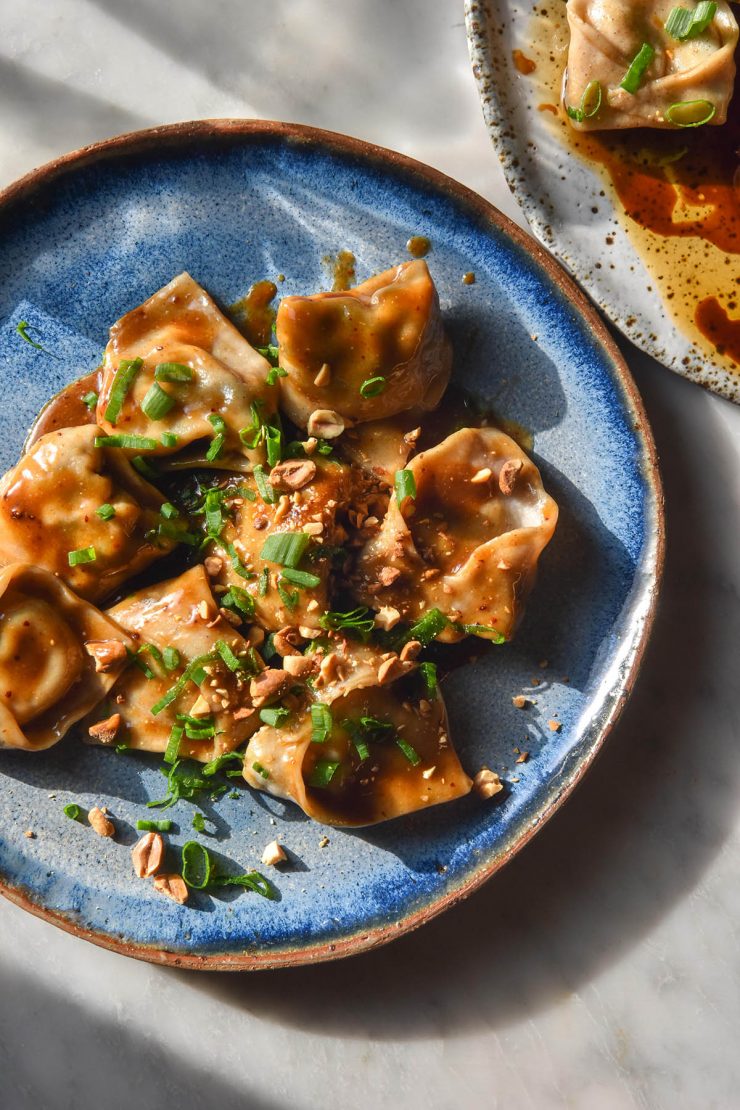
I’ve had my gluten free dumpling wrapper recipe on my website for a while now. I love that recipe use it all the time, but I wanted to develop a recipe gluten free wonton wrappers too. So today, we’re diving right in to all things wonton wrappers.
Gluten free wonton wrappers
These wonton wrappers use the basis of my dumpling wrapper recipe. By scalding the flours, an elastic, gelatinized dough forms that is very flexible and easy to roll out. Because wonton wrappers traditionally contain egg, the recipe has been adjusted slightly to account for this.
The scalded flour is left to cool completely before we add the eggs. This way, we get the best of both worlds: xanthan gum free wrappers that are easy to roll and the traditional addition and yellow hue of eggs. A win win.
These wrappers are xanthan gum free, nut free and incredibly easy roll out. Because they are inspired deeply by my gluten free vegan dumpling dough, they have a vegan/egg free option: aforementioned vegan dumpling dough.
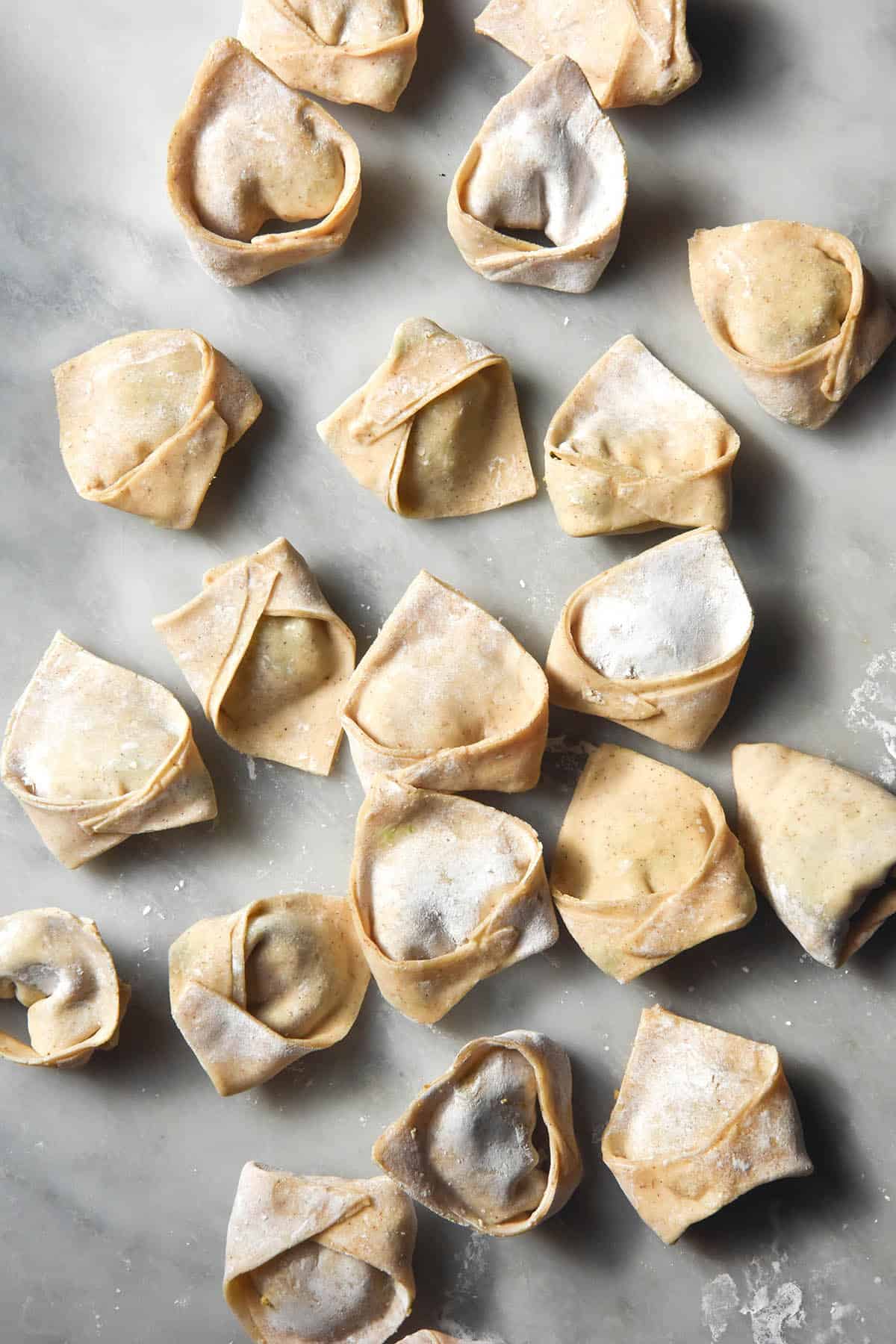
What is a scald?
Scalding is a simple process of pouring boiling water over flour. Doing so gelatinizes the starches in the flour and makes them elastic. This creates some strength in the dough that would otherwise not be there without gluten or xanthan gum.
Of course, eggs and boiling water don’t mix. So, to successfully use both ingredients, we have to allow the dough to cool before the eggs are added.
Can I make these gluten free wonton wrappers without eggs?
You can. Without eggs, this recipe is essentially my gluten free dumpling wrapper recipe with less water. I recommend following that recipe as it specifies an amount of boiling water specific to an egg free wrapper.
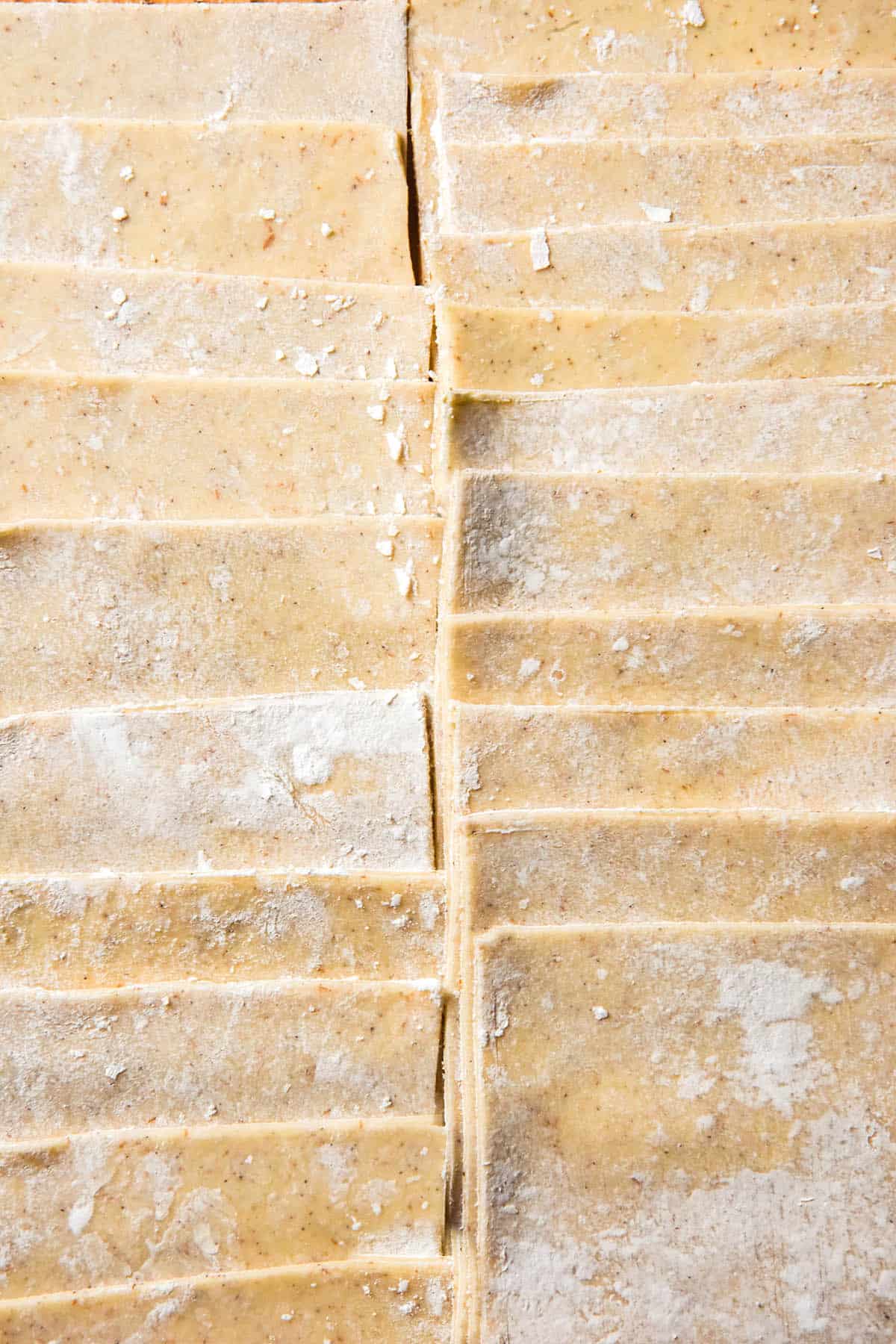
Can I experiment with other flours in these wonton wrappers?
You can! I haven’t tested any other combination than the one specified in the recipe card, and I can’t guarantee any specific results. However, I have tested my dumpling wrapper recipe with a whole host of different gluten free flours, and all worked. I have even developed an 100% buckwheat flour dumpling wrapper. I also have a rice flour free dumpling dough recipe.
That said, some advice: add the water and eggs to suit the dough. Rice flour is one of the thirstiest gluten free flours and will likely need more liquid than others. Dough that is too wet is an absolute nightmare to roll out.
If you add the liquid and find that the dough is already wet enough, forget about the eggs. It will work without them, provided you have used boiling water and psyllium husk powder.
If you do experiment, I also recommend using majority wholegrain flour and minority starch. Aside from the fact that scalds don’t perform nearly as well on starches, starch based wrappers are often also stickier and harder to roll out.

Tips for using your gluten free wonton wrappers
Probably the most important tip: these take time. First you have to roll and cut all the wrappers, then fill and fold them. Not to mention, cooking the filling, allowing it to cool and making the wrappers themselves. This is not a speedy weeknight dinner. With that said, it makes 50+ wontons which can be frozen for speedy weeknight dinners.
Roll the wrappers thinly, without being see-through level of thin. They are more fragile than traditional wrappers and will break if they’re too thin. However, they’ll be less pleasant to eat if they are too thick.
Use plenty of tapioca flour to roll out the dough. It ensures nothing gets stuck and allows you to stack the wrappers on top of each other as you cut them out. Stacking them helps ensure they don’t dry out.
Dried out wrappers will be too firm and crusty to shape without them breaking. Make sure they stay moist without being overly wet. It can help to fill them in batches to avoid this, or simply ensure they remain covered as you work.
Don’t over fill these wonton wrappers. They are gluten free and xanthan gum free, after all.
To that end: use a soft filling with no hard lumps and bumps. The dough is soft and will easily break if you include big chunks of nuts or meat or whatever.
How to fold these gluten free wonton wrappers
Interestingly enough, I found these wonton wrappers a little more fragile than my dumpling wrappers, which are essentially the same recipe but without eggs. As such, I kept the folds fairly simple. You can do whatever you prefer, but below are some visual aids as to how I folded mine.
With the above said, I found the wrappers, even when broken, were more resilient as they cooked. Even with a little hole, they tended to hold together. I suspect this is down to the addition of the eggs giving the dough extra strength.
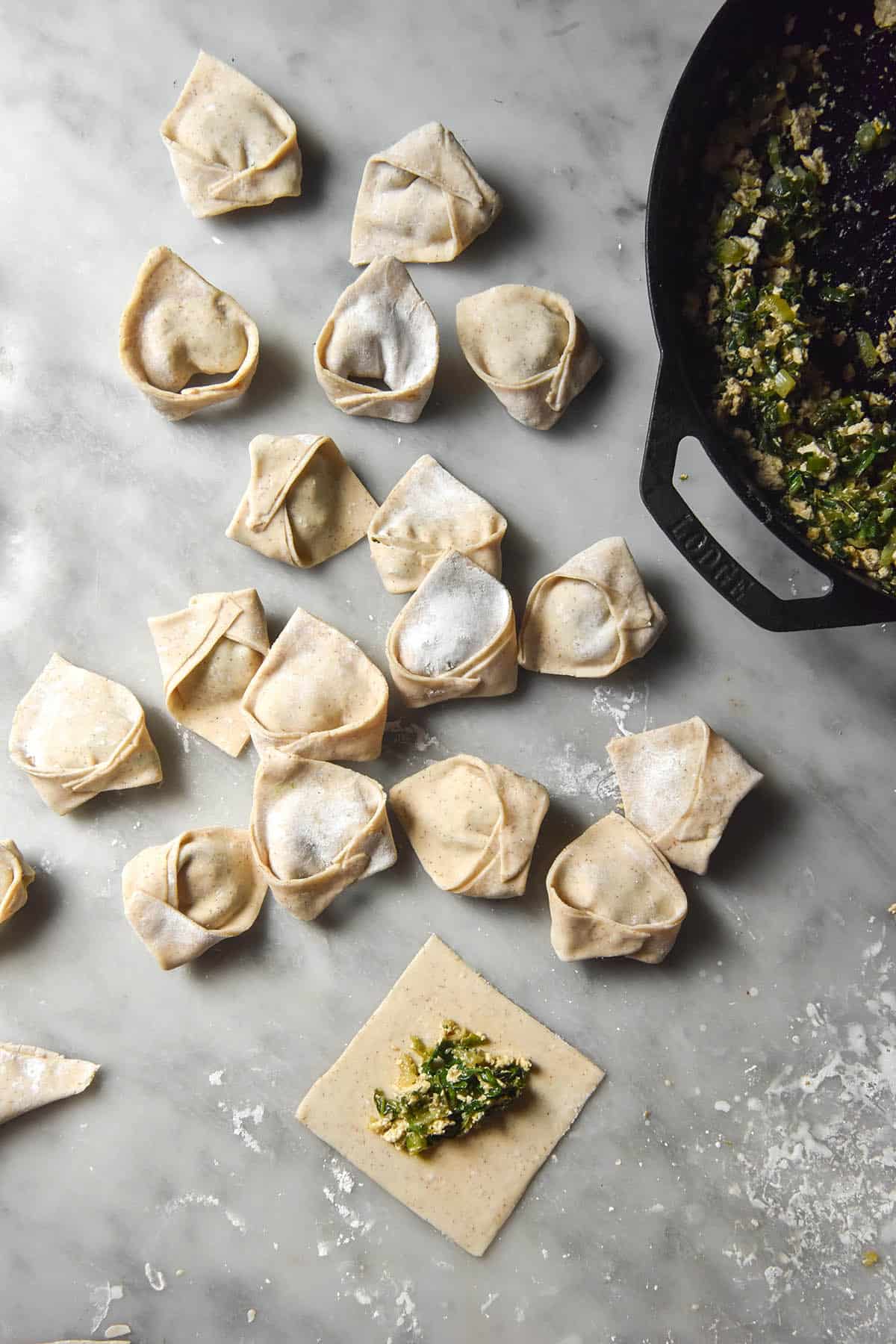
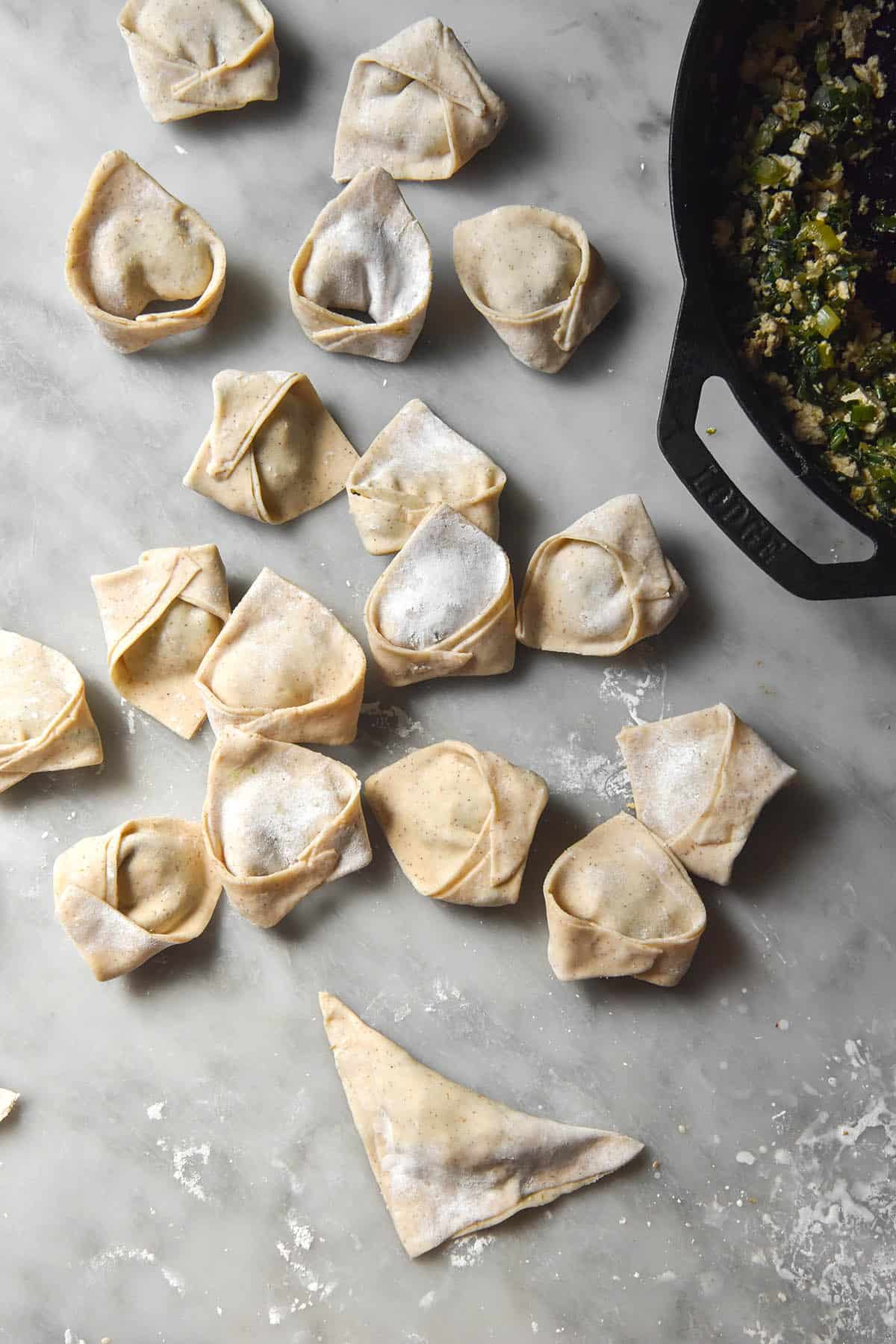
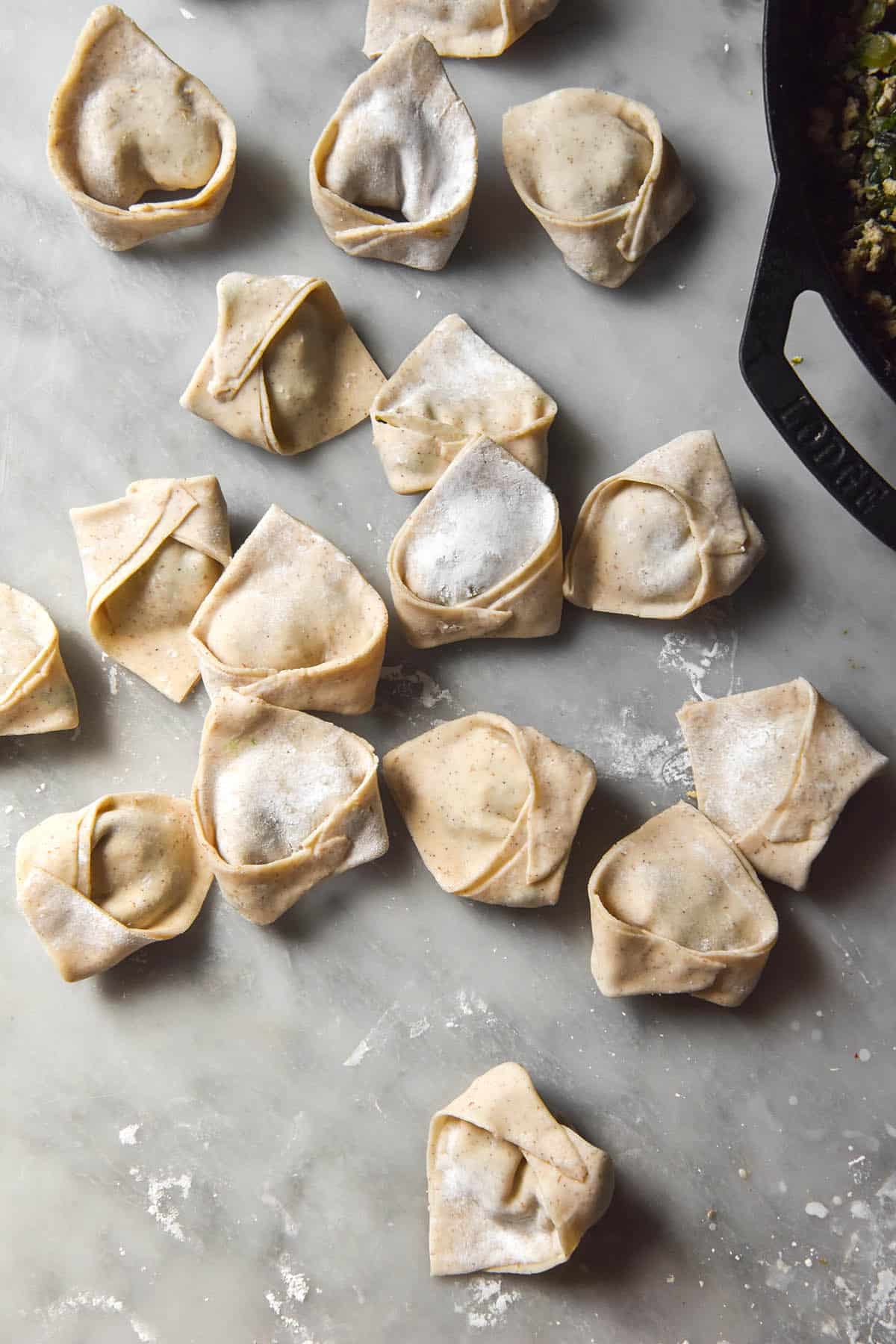
How many wontons does this recipe make?
This depends on a few things. Firstly, the size of the cutter or stencil you use. I don’t have a square cookie cutter, so I used a 9cm X 9cm (3.5 inch X 3.5inch) square piece of cardboard from a salt shaker box as a stencil. I placed it onto the rolled out dough, then cut around it using a sharp knife.
The width of each wonton wrapper is 1-2mm max. Any thicker and the wontons will be unpleasant to eat.
Using these measurements, my tests made 50-55 wontons.
Another thing to consider loosely in this category is how much filling will be leftover. The filling recipe is developed to align with the amount of wrappers, but this depends on how much you fill your wontons. I have made these and the dumplings many times, so I have a sense of how full I can stuff them. Those who haven’t will (rightly) add filling conservatively, which means there will be some leftover. It can be eaten solo (something I do often).
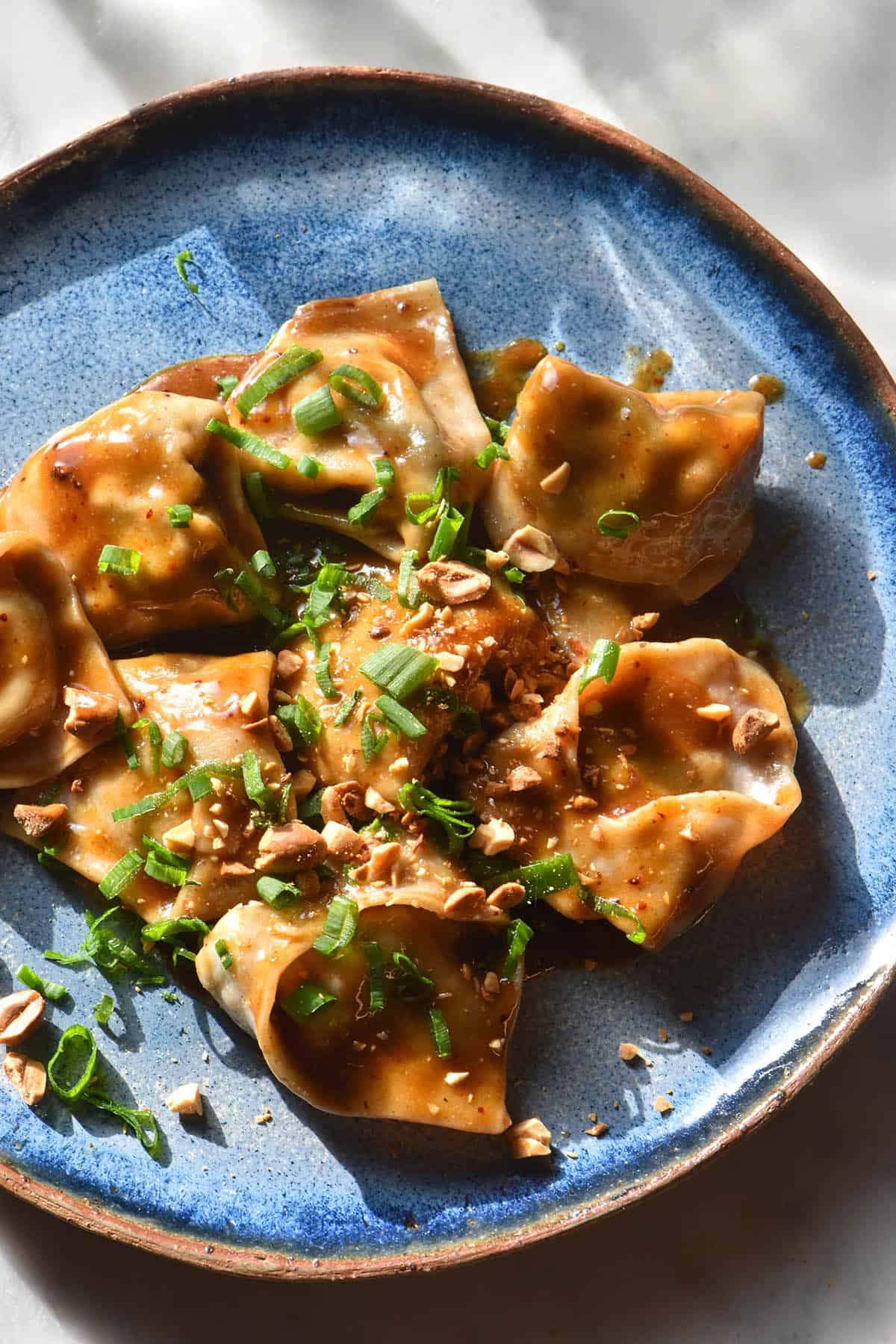
Can I freeze these wonton wrappers?
Personally I would recommend freezing filled wontons as opposed to wonton wrappers. The wrappers would need to be separated prior to freezing, which would be a tedious process. They would then need to be laid out individually to defrost in order to avoid them fusing together.
I like to make and fill my wontons on one day for best results. I then freeze them on a lined baking tray spread apart (to prevent them getting stuck together). When they are frozen, I simply decant them into a tub or bag in the freezer. This keeps them fresh but also ensures they are not stuck together.
When I want to cook them, I simply boil the water and cook them from frozen.
What can I fill these gluten free wonton wrappers with?
I have a few low FODMAP vegetarian or vegan dumpling filling recipes that work well in these wonton wrappers.
- Tofu and bok choi dumpling filling
- Tofu and ginger dumpling filling from Intolerance Friendly Kitchen
- Spinach and water chestnut dumpling filling from Intolerance Friendly Kitchen
- Top them with this delicious low FODMAP dumpling sauce
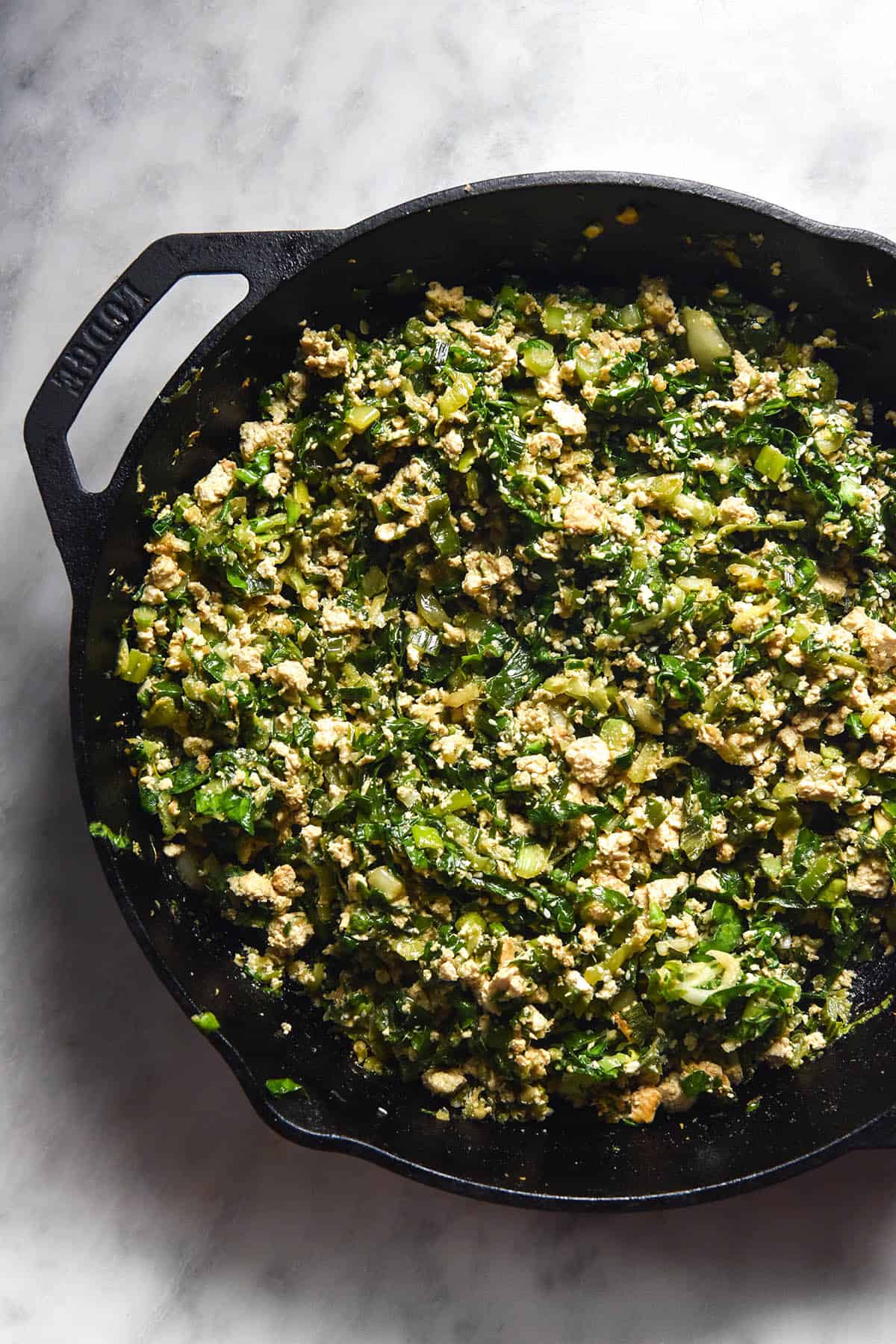
More gluten free recipes
- Gluten free Varenyky
- Gluten free pierogi
- Low FODMAP tofu and ginger dumpling filling from Intolerance Friendly Kitchen
- Gluten free egg noodles
- Easy low FODMAP chilli oil noodles
- 100% buckwheat flour dumpling wrappers from my first buckwheat flour e-book
- Gluten free bao buns
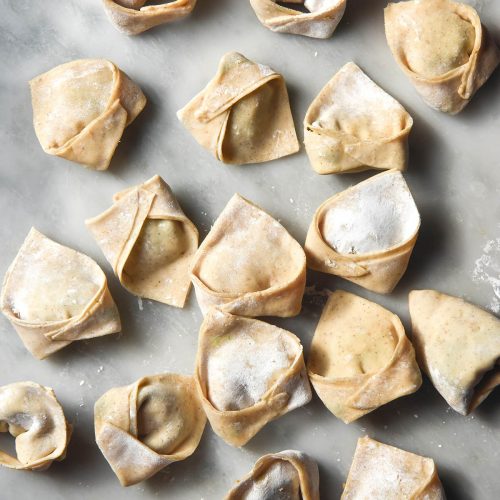
Gluten free wonton wrappers (xanthan gum free)
Equipment
- 9cm X 9cm (3.5inch X 3.5inch) square cutter
Ingredients
For the dough:
- 240 g (1 1/2 cups)* white rice flour
- 120 g (1 cup)* tapioca flour
- 20 g psyllium husk powder
- Pinch of salt
- 150 g (3/4 cup)* boiling water
- 3 extra large eggs (45-55g per egg, weighed out of shell)
To finish:
- Plenty of tapioca flour for rolling the wrappers out
Instructions
To make the wonton wrappers:
- Whisk the flours, psyllium husk powder and salt together in a medium/large mixing bowl. Pour over the boiling water and stir to combine as much as possible. The mixture will be crumbly and dry, but should have even distribution of the liquid. Set aside to cool for 15-20 minutes.
- Once the mixture is cool, rub it together between your hands like pastry. Try to distribute the liquid as evenly as possible into the dough, as this will make it easier to determine if the dough is sufficiently moist in the next step.
- Add the eggs, one by one. Mix the first egg in completely before adding the second. If you only need one or two eggs, that’s fine. The scalded flour and psyllium husk will hold the wonton wrappers together.
- The dough should be moist and juicy without any dry spots once it’s hydrated. It should not be too wet – you should be able to pick it up easily. Set it aside for 10 minutes to settle.
- To roll the wrappers out, liberally flour a dry, clean bench. Work in small batches of dough and cover the cut out wrappers with a very lightly moistened tea towel.
- Use a 9cm X 9cm (3.5 inch X 3.5 inch) cutter to cut out squares of wonton wrapper. I used a piece of cardboard and cut around the shape with a knife.
- Repeat with the remaining dough. With those measurements, I cut between 50-55 wrappers.
- I recommend filling the wontons before freezing.
To cook filled wontons:
- Bring a medium/large pot of water up to a simmer (just under a boil, as these wrappers can be a little fragile and might break in a rough boil).
- Cook 6-7 wontons at a time, depending on the size of the pot. Gently lower them into the water and cook for 3-5 minutes, depending on how thick you have rolled the dough.
- Turn the wontons intermittently as they cook. They have a tendency to float with one side up, meaning that side gets less cooking time. Try to flip them to cook both sides evenly.
- Cooked wonton dough starts to look a little bit translucent, whereas uncooked dough looks pale and matte in comparison. Continue cooking until all the dough is translucent, noting this might take longer if you are cooking frozen dumplings.
- Use a spoon to gently remove each wonton individually and place into a strainer to drain. This will prevent the wontons breaking.
- Serve with a dipping sauce of your choice. Leftovers keep well in the fridge for a few days.
Notes
- See my vegetarian dumpling or wonton filling recipe here.
- If you are cooking wontons from frozen, they might take a little longer to cook.
- See the body of the post for my notes on rolling and filling these wonton wrappers.

No Comments